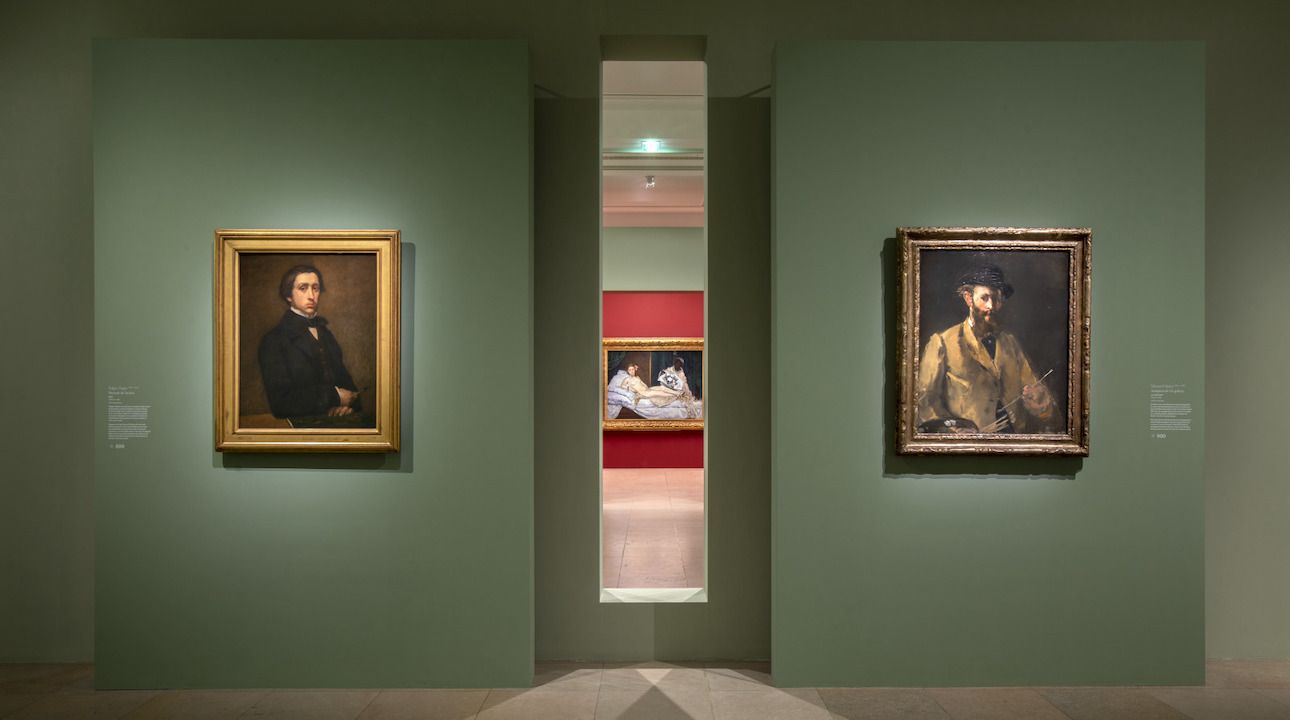
Legend has it that Edgar Degas (1834-1917) and Édouard Manet (1832-1883) first met at the Louvre where both often went to study and copy the Old Masters when they were in their early twenties. Manet allegedly made a depreciating comment about Degas’s drawing skills. Even so they struck up a friendship, which lasted until Manet’s death in 1883.
The exhibition Manet/Degas at the Musée d’Orsay explores the relationship between the two painters, who were instrumental in shaping modern painting in France. They were friends and rivals and their relationship was not without obstacles. Manet kept his distance from the Impressionists, but Degas embraced the movement, even though he rejected the term and was careful not to paint like Monet. And whereas Degas made dozens of portraits of Manet, as far as is currently known, Manet didn’t make a single portrait of Degas.
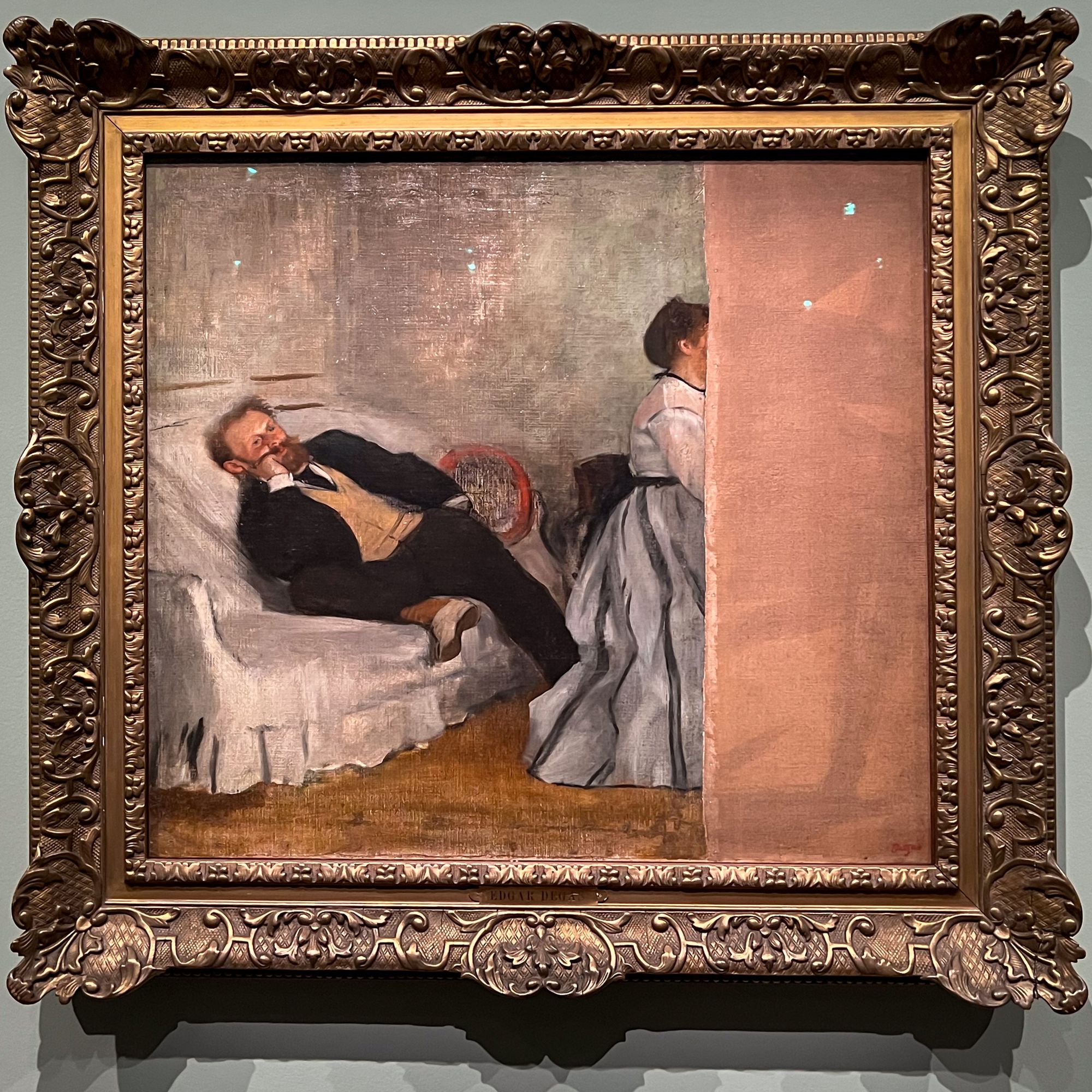
One of Degas’s portraits shows Manet leaning against the back of a sofa with his wife sitting behind a piano. Degas gave the double portrait to Manet, who was very dissatisfied with the work, so much so that at some point he took a knife and cut off the part of the canvas showing the “excessively ugly” image of his wife. Degas was deeply offended when he next visited Manet and discovered what Manet had done. He took the painting back and returned a still life that Manet had given him. Manet, meanwhile, also painted his wife sitting behind a piano, the way he saw her or wanted her to be seen. Years later Degas added a strip of canvas to his painting, intending to finish it and to give it to Mrs Manet, but he never came around to doing so. The episode says a lot about both men: the vanity of the one and the loyalty and generosity of the other.
The exhibition Manet/Degas is jointly organized by the Musée d’Orsay and the Metropolitan Museum of Art in New York and the curators were able to secure loans from a number of other institutions. It is therefore an excellent opportunity to see some wonderful paintings that are rarely shown together. Of course, Manet’s "Olympia" (1863) and his "Le Balcon" (1868-69) would be a highlight of any exhibition. The curators did not move "Le Déjeuner sur l’herbe" (1863), which can be seen in the Musée d’Orsay’s permanent collection, just as a number of Degas’s famous paintings and pastels of ballet dancers.
As always I enjoyed discovering paintings that I hadn’t seen before or that I may have seen but had completely forgotten about, such as Manet’s portrait of Émile Zola, in which he included an engraving of Olympia, of which Zola had written that it was a masterpiece worthy of the Louvre. Manet offered the painting to Zola in recognition of his public support. The painting is shown next to a painting by Edgar Degas of James Tissot in his studio, which has a similar composition.
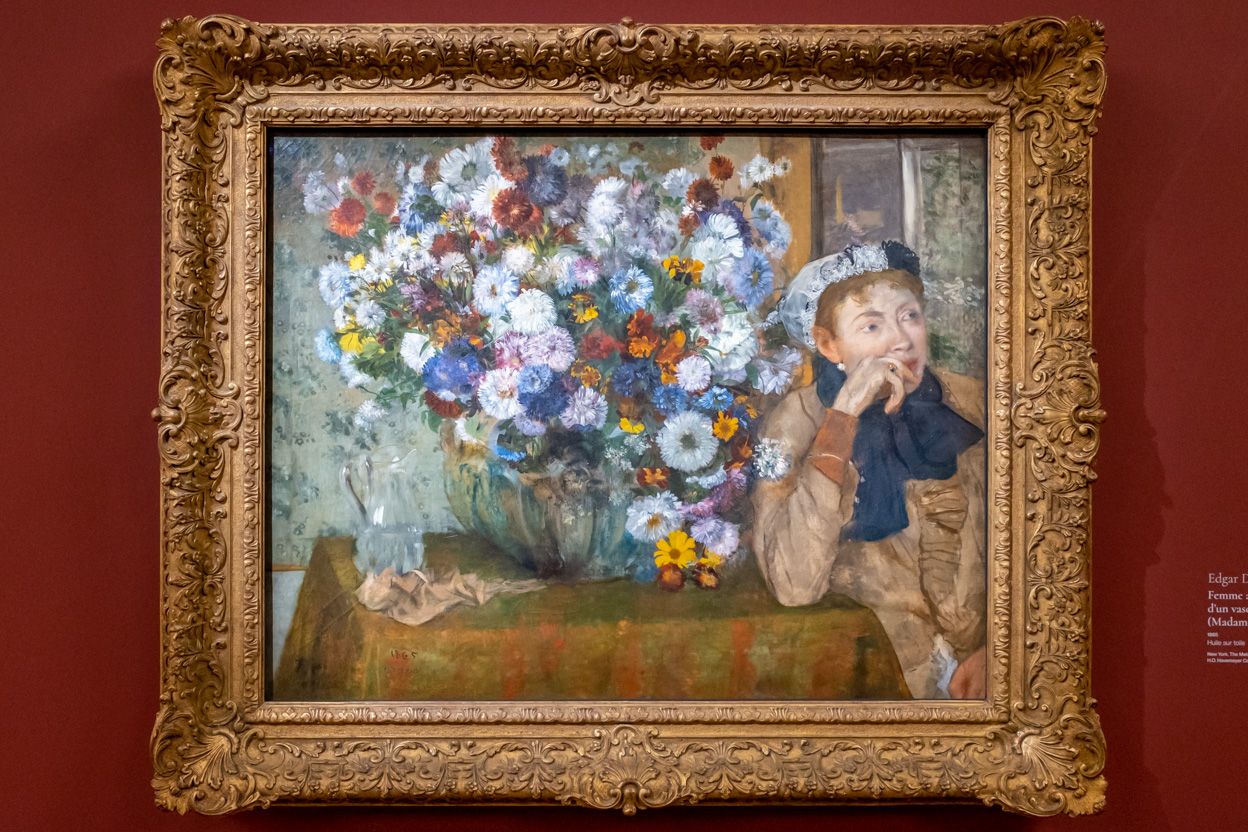
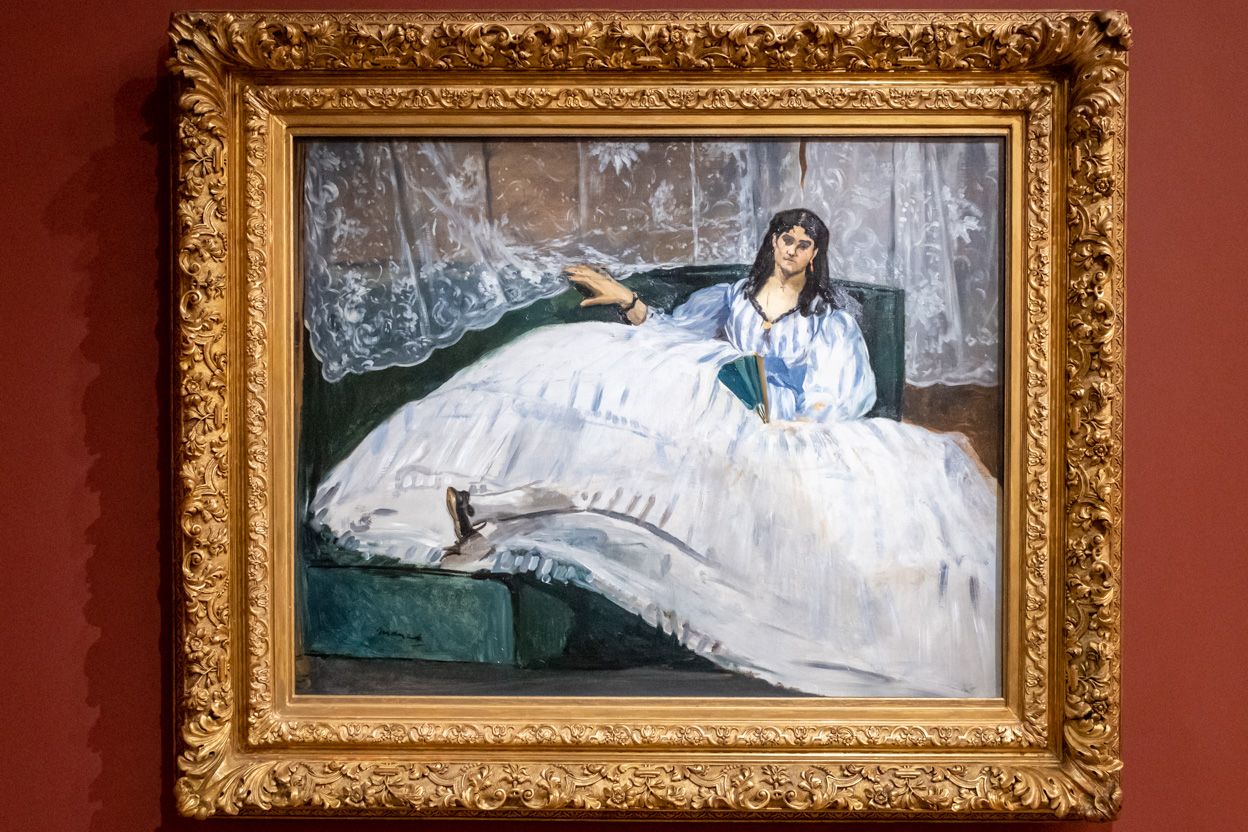
Edgar Degas, La Femme aux chrysanthèmes (1865) (left) Edouard Manet, Jeanne Duval (1862) (right)
"La Femme aux chrysanthèmes" (1865) by Degas is a pretty stunning painting showing a large, colourful bouquet of flowers set on a table which occupies much of the surface of the canvas. Sitting next to the table is a woman, who is only half visible and whose gaze is directed to the side of the viewer. Equally fascinating is a portrait of "Jeanne Duval, aka Baudelaire's Mistress" (1862) by Manet, which shows a woman in a white dress reclining on a sofa. The dress is huge and it too covers a large portion of the canvas. What I find interesting about both paintings is that they border on abstraction.
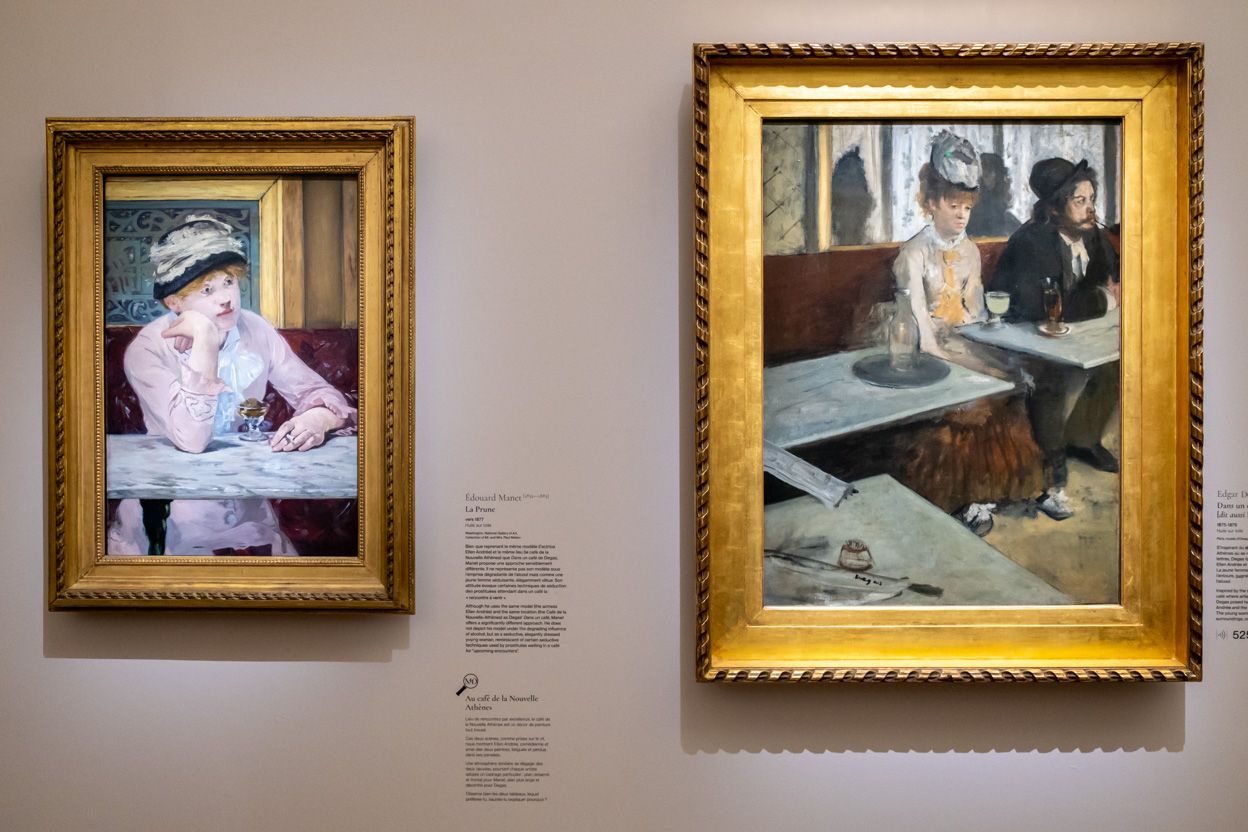
The exhibition is divided into several thematic sections, which show how Manet and Degas approached the same subject, whether a millinery shop, a beach scene, a family portrait or a woman bathing. It is interesting to observe the parallels and the contrasts in their approach. For example, both painted a portrait of a woman sitting behind a table in a cafe, for which they both chose the same model, the actress Ellen Andrée. In the painting by Degas the woman appears zoned out as she sits slumped in her chair, her shoulders drooping. In the painting by Manet the woman looks dreamy, absorbed in thoughts. In the painting by Degas it is almost as if the viewer is seated behind the table in the bottom left corner of the canvas. The painting by Manet, by contrast, looks like a classic portrait.
The exhibition ends with Manet’s "The Execution of Maximilian" (1867-1868), which was inspired by Goya’s "The Third of May 1808". After Manet’s death in 1883 his heirs cut the painting into pieces (it runs in the family), because they were afraid that it might tarnish his reputation. Somehow Degas was able to collect most of the remaining pieces, which he put together again. In the following years Degas went on to acquire a large number of works by Manet, which he kept until his own death in 1917, in a final tribute to their friendship.
Manet/Degas is at the Musée d’Orsay in Paris until 23 July 2023. From 24 September until 7 January 2024 it will be on show at the Metropolitan Museum of Art in New York.